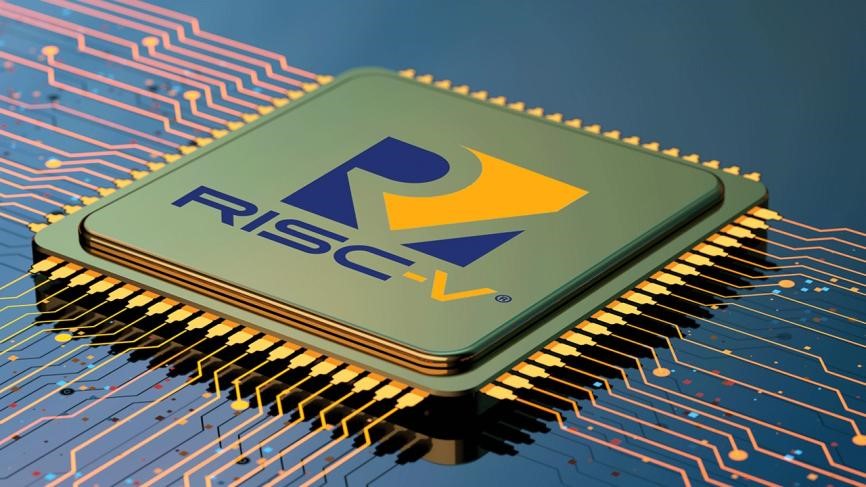In the fierce competition in the global semiconductor industry, the RISC-V architecture is leading an unprecedented technological revolution with its unique open source, flexibility and high efficiency. Especially in China, RISC-V is not only regarded as the key to breaking through the existing technical barriers, but also an important force to promote the rise of the local chip industry. According to SHD Group's authoritative forecast, the RISC-V market will surge to US$92.7 billion by 2030, with a compound annual growth rate of 47.4%.
1. Market potential: RISC-V leads the future growth pole
The rise of the RISC-V architecture, thanks to its unique advantages of open standards and modular design, provides developers with unprecedented freedom and flexibility. According to SHD Group, the global RISC-V market is expanding at an alarming rate and is expected to reach $92.7 billion by 2030, growing at a CAGR of 47.4%. Behind this data is the widespread recognition and rapid application of RISC-V technology around the world. In the Chinese market, the potential of RISC-V chips is particularly significant. In 2023, China's RISC-V chip market has reached US$1.7 billion, and it is expected to soar to US$25 billion by 2030, with a compound annual growth rate of 47.9%. This growth not only reflects the huge market demand in China, but also demonstrates the active participation and significant contribution of Chinese enterprises in the RISC-V ecosystem.

Figure: RISC-V Revolution: The Rise of China's Chip Industry and the Future $92 Billion Market Outlook
2. Technical advantages: the dual charm of customization and low power consumption
The core competency of the RISC-V architecture lies in its open-source and modular design, which allows developers to flexibly tailor the processor architecture to specific application scenarios to optimize performance and cost. In cutting-edge fields such as the Internet of Things, AI, and 5G communications, this feature of RISC-V is particularly critical. For example, the RISC-V automotive-grade MCU chip launched by Great Wall Motor, Bauhinia M100, is a successful application model of RISC-V in the field of automotive electronics. The chip not only meets the stringent requirements of automotive electronic systems for high performance, high reliability and low power consumption, but also demonstrates the great potential of RISC-V architecture for customized applications. In addition, the low power consumption of RISC-V also makes it an ideal choice for mobile devices and edge computing, providing a strong guarantee for the battery life and energy efficiency of smart terminals.
3. Industrial ecology: The Greater Bay Area is led by innovation, and enterprises are competing for layout
As an important gathering place for China's semiconductor industry, the Greater Bay Area has become the forefront of RISC-V technology development and application with its well-established industrial chain, active innovation atmosphere and active government support. Here, well-known companies such as Huawei HiSilicon, Intellifusion, and Bluetrum have launched chip products based on the RISC-V architecture, which not only promotes the development of RISC-V technology, but also injects new vitality into the semiconductor industry in the Greater Bay Area and even the whole country. For example, the DeepEdge10 series chips launched by Intellifusion use independent and controllable domestic technology to support the deployment of large model inference, providing efficient and reliable solutions for edge computing and intelligent security. The innovative practices of these enterprises not only enrich the diversity of the RISC-V ecosystem, but also provide strong support for the independent controllability and industrial upgrading of China's semiconductor industry.
4. Policy support: policy dividends under the independent and controllable strategy
The Chinese government attaches great importance to the independence and controllability of the semiconductor industry and industrial upgrading, and has provided strong support for the R&D and industrialization of RISC-V chips through a series of policies and measures. From capital investment, tax incentives to talent training, the government's multi-dimensional support system provides a good external environment for the R&D and application of RISC-V technology. For example, the establishment of the Bay Area Semiconductor Industry Group aims to solve the problem of insufficient local chip production capacity and promote Guangdong to build an IC industry with "Guangdong characteristics". This initiative will not only help improve the independent and controllable ability of China's semiconductor industry, but also provide a broader space and opportunities for the R&D and industrialization of RISC-V chips.
5. Future outlook: RISC-V leads a new chapter in China's semiconductor industry
To sum up, the RISC-V architecture is leading China's semiconductor industry to a new stage of development with its unique advantages and wide application prospects. With the advancement of technology and the improvement of the ecosystem, RISC-V is expected to be widely used in many fields, providing strong support for the future development of China's semiconductor industry. In the future, with the active participation and contribution of more Chinese enterprises, RISC-V technology will show a broader development prospect in China and even the world, and promote China's semiconductor industry to achieve a new leap.






